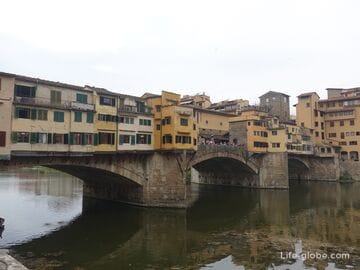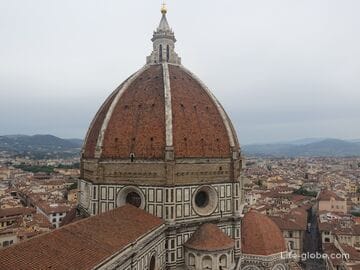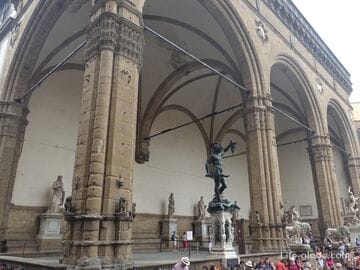Palazzo Vecchio (which translates as "Old Palace") is the city Hall of Florence, which is one of the most important and famous buildings in the city.
Today the town hall can be visited. Within its walls is the Palazzo Vecchio Museum (Museo di Palazzo Vecchio), and the Arnolfo Tower can be climbed and admire panoramic views of the city.
The Vecchio Palace is located in the heart of Florence, on the famous Piazza della Signoria.
The palace is also known (one of the original names) as Palazzo della Signoria, in honor of the Signoria of Florence - the ruling authority that met in the building. The name "Old" palace was given after the residence of the Duke of Medici was moved across the Arno River to the Palazzo Pitti.
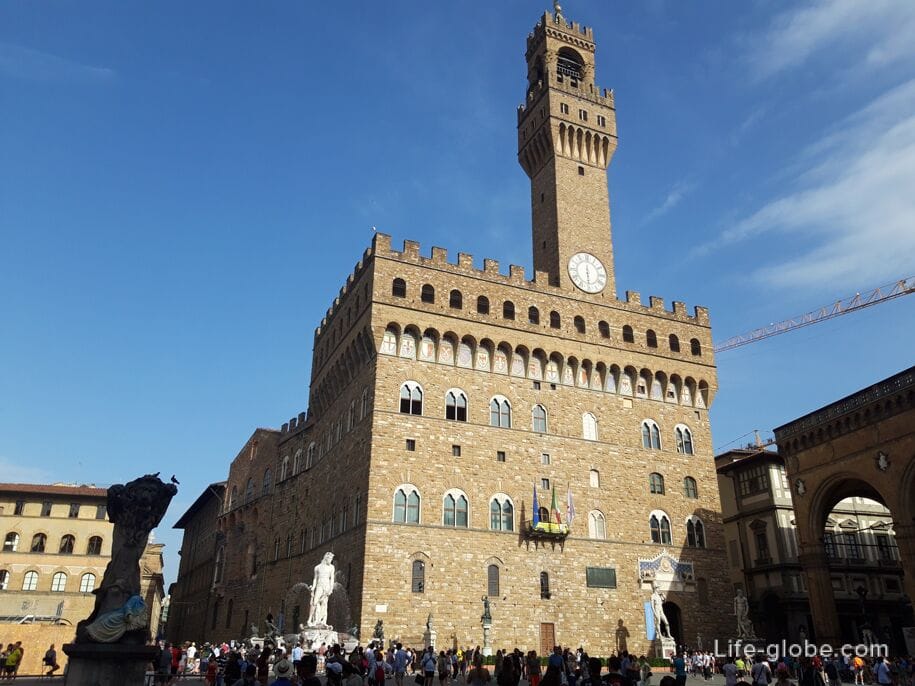
This outstanding palace and government building was built in 1299-1314 by the Italian architect and sculptor Arnolfo di Cambio. The building was erected on the site of houses belonging to the noble Uberti family, which, in turn, stood on the ruins of the theater of the Roman city of Florentia.
During the history of the palazzo was modernized and expanded. The palace served as the residence of the provisional government of united Italy from 1865 to 1871, when Florence was the temporary capital of the Kingdom of Italy.
Although today most of the Palazzo Vecchio is a museum, but it also remains a symbol and center of local government - it houses the office of the Mayor of Florence, as well as the city council.
Externally, Palazzo Vecchio looks like a small fortified castle, which is facilitated by strict powerful features, rows of window openings, heraldic symbols in niches and a gallery crowned with battlements, a belfry and an Arnolfo tower, which enhances the appearance of the entire structure.
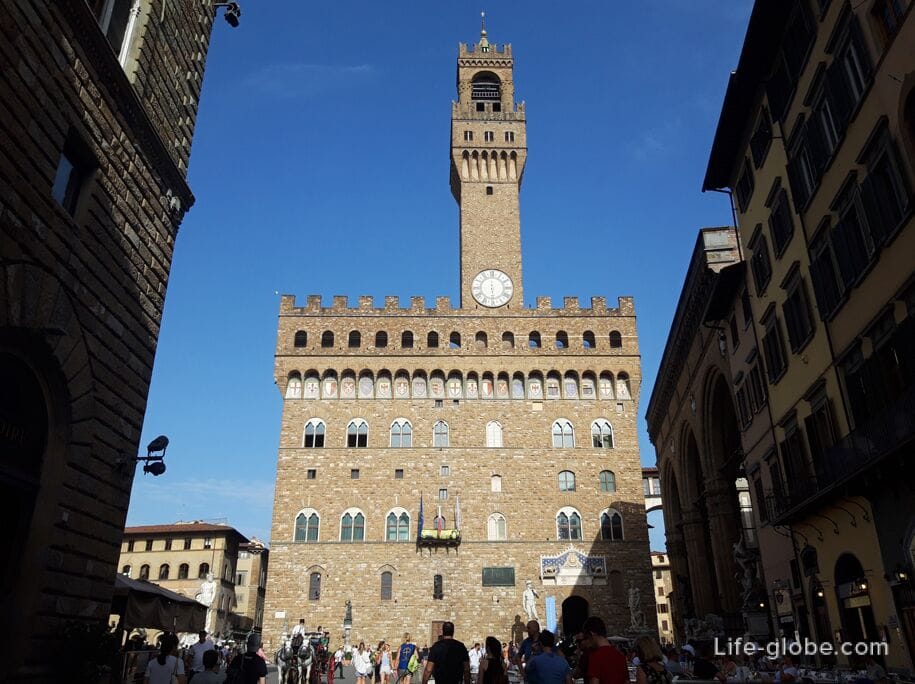

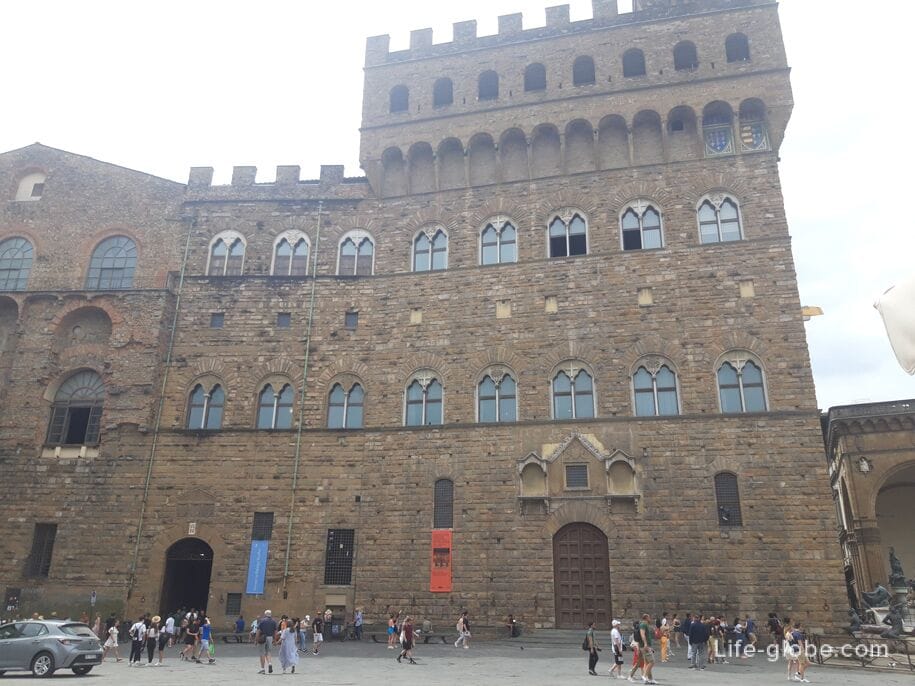
Free drinking fountains are located in the northern wall of the Palazzo Vecchio (the landmark is Via dei Gondi). Non-carbonated water - the right fountain, carbonated water - the left.
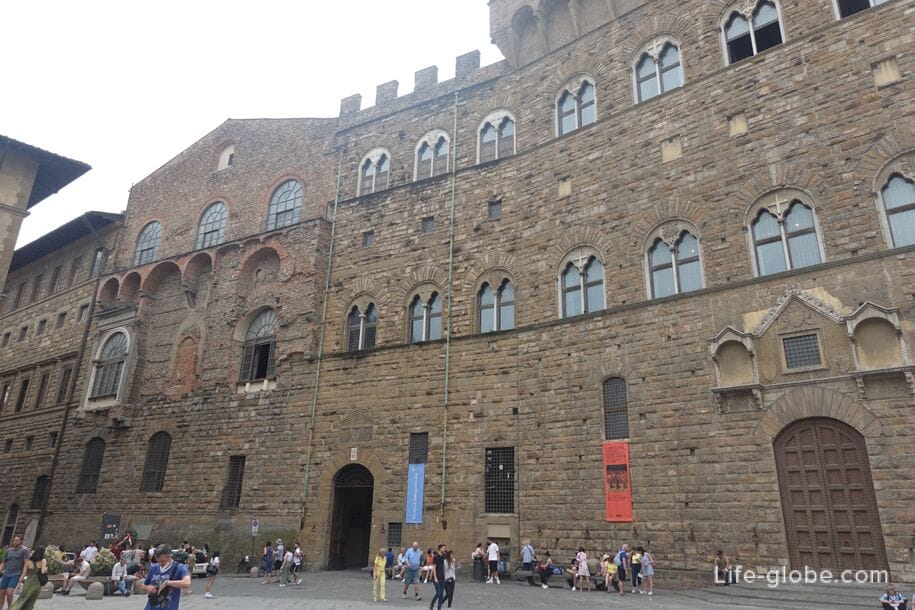
Arnolfo Tower - observation deck
The Palazzo Vecchio tower, which is called the Arnolfo Tower, has a height of 95 meters and is named after its creator - Torre d'Arnolfo.
In this tower there are two small cells in which Cosimo the Elder Medici (1433) and Girolamo Savonarola (1498) were kept at different times.
In the bell tower of the tower there are bell cells in which there are bells: the well-known Martinella bell (with the function of summoning Florentines), as well as the bell of the South and the bell of ringing.
At the very top of the tower there is a copy of an ancient weather vane depicting the lion of Marzocco with a Florentine lily, which is now kept in the palace.
A clock installed in 1667 attracts attention on the tower. This is the work of the Augsburg master Georg Lederle, replacing the original single-column clock on the tower, created in 1353 by Florentine Nicolo Bernardo. The clock has preserved the mechanism of 1667 and is still running.
Inside the tower, a stone staircase of 223 steps leads to the upper level of the crenellated observation deck, which offers panoramic views of the historic center of Florence. You can also take a walk on the terrace of the palace. The ascent to the tower is paid.
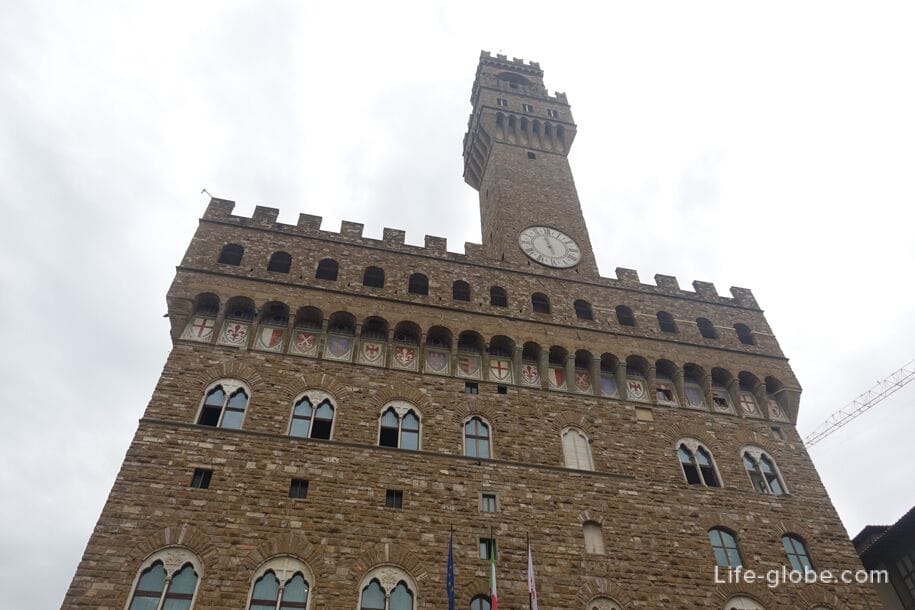
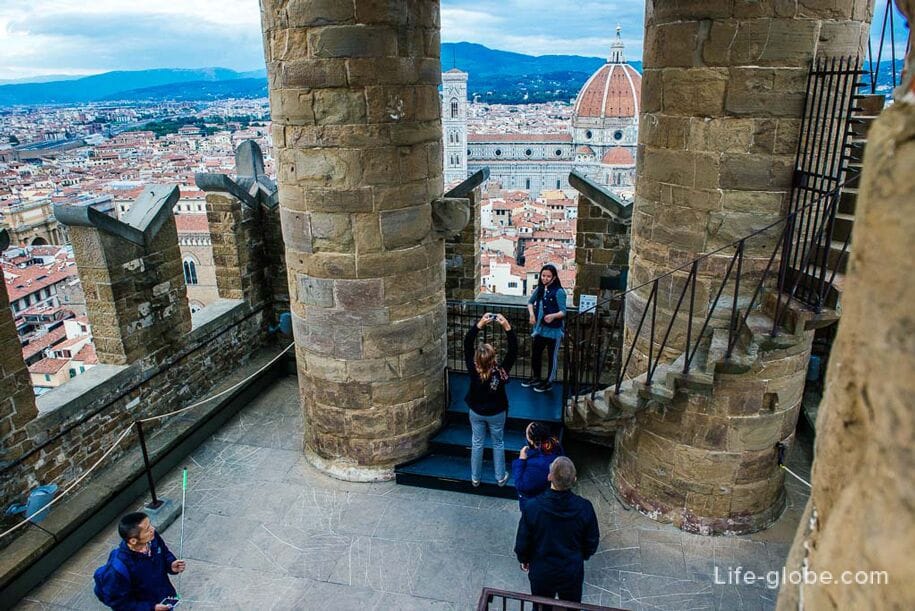

Front entrance and sculptures
The main entrance to the Palazzo Vecchio is located on the side of Piazza della Signoria.
Above the entrance is an ornamental marble frontispiece dating from 1528. In the middle, surrounded by two gilded lions, is the monogram of Christ, surrounded by glory, above the text (in Latin): "Rex Regum et Dominus Dominantium" (translation: "King of Kings and Lord of Lords"). This text dates from 1851 and does not replace the earlier text of Savonarola, as mentioned in some guidebooks. Between 1529 and 1851, it was hidden behind a large shield, with the Grand ducal coat of arms.
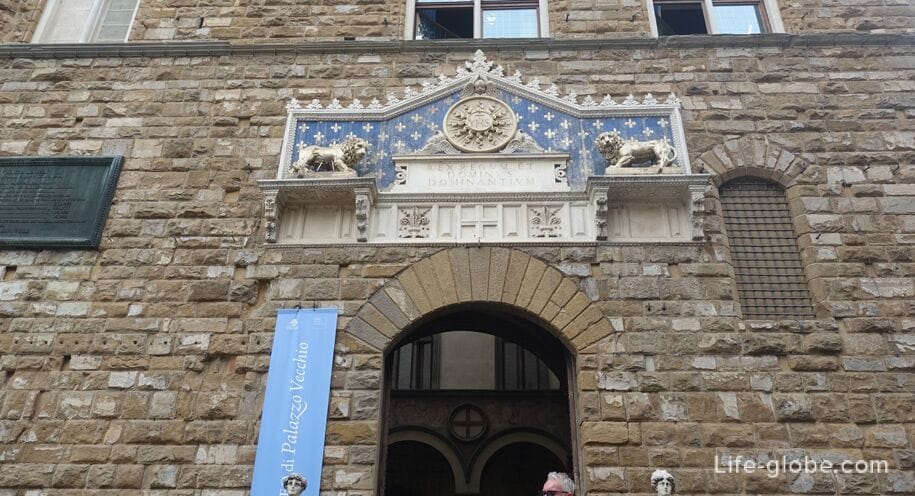
Two sculptures are placed at the main entrance:
- on the left, a replica of Michelangelo's David, installed in 1910. The original sculpture stood in this place from 1504 to 1873, after which it was moved to the Museum Gallery of the Academy of Fine Arts in Florence (Accademia di Belle Arti di Firenze), where it is on display to the public to the present;
- on the right, the sculpture group "Hercules who defeated Cacus".
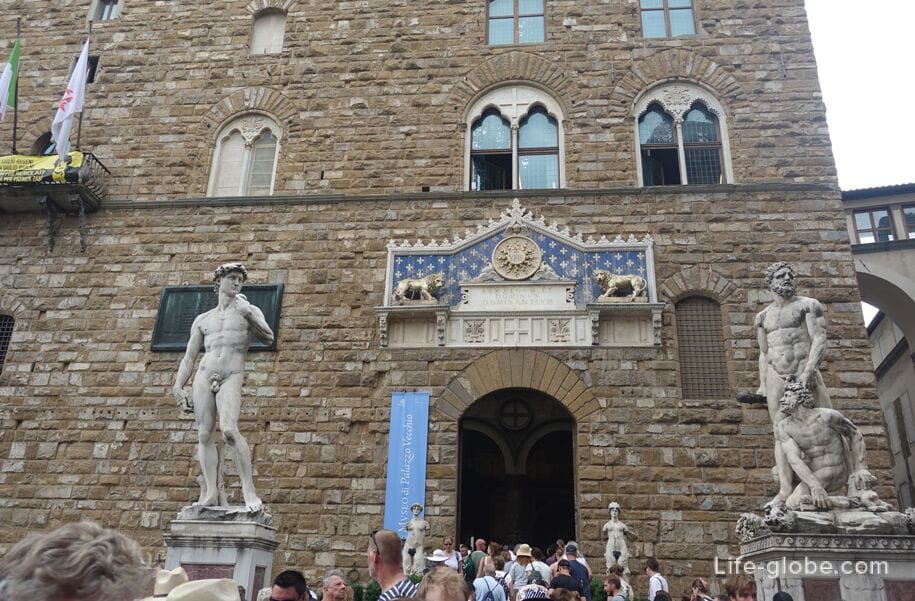
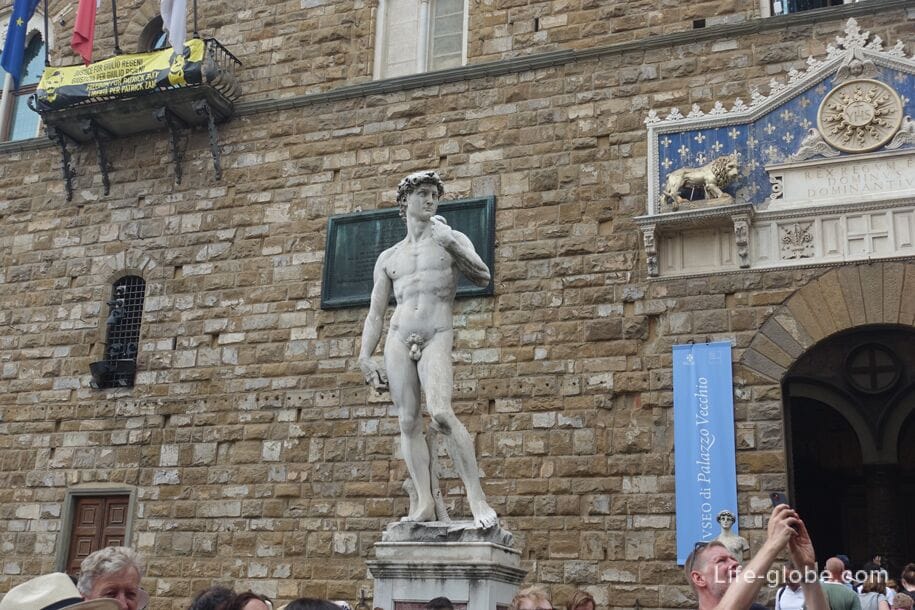

Courtyards of Palazzo Vecchio
After going to the main entrance of the palace, we get into the courtyards. Entrance to the courtyards is free.
The First Courtyard is a striking piece of architecture designed by the Italian architect and sculptor Michelozzo di Bartolomeo in 1453.
The center of the courtyard is decorated with the porphyry fountain of Battista del Tadda. The putto with the dolphin on top of the pool is a copy of the original by Andrea del Verrocchio (1476), which is now on display on the second floor of the palace. The water flowing through the dolphin's nose comes here through pipes from the Boboli Gardens, on the other side of the Florence River.
Powerful columns with arched openings, originally smooth, richly decorated with stucco.
The coats of arms of the church and city guilds are placed in the lunettes around the courtyard.
In the niches of the courtyard walls there are monumental statues of Samson and the Philistine by Pierino da Vinci.
The walls are richly decorated with frescoes representing the vedutes of the cities of the Austrian Habsburg Monarchy, painted in 1565 by Giorgio Vasari to celebrate the wedding of Francesco I de' Medici, the eldest son of Cosimo I de' Medici, with Archduchess Johanna of Austria, sister of Emperor Maximilian II. Among the cities depicted are: Graz, Innsbruck, Linz, Vienna, Bratislava (Pojon), Prague, Hall in Tyrol, Freiburg im Breisgau and Constance.
The cylindrical vaults of the ceiling have grotesque decorations. And looking up from the center of the courtyard, you can see the power of the tower and the inner walls of the Old Palace.
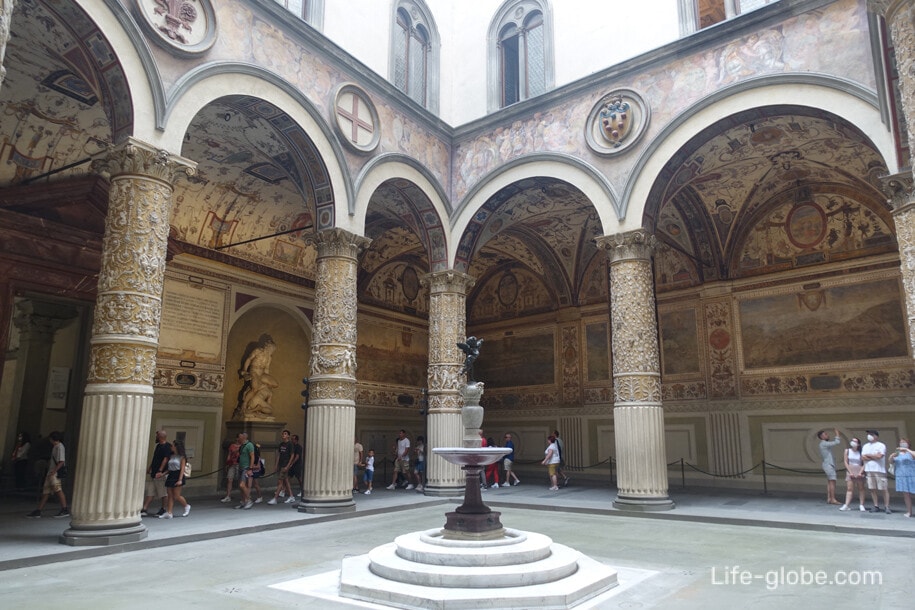
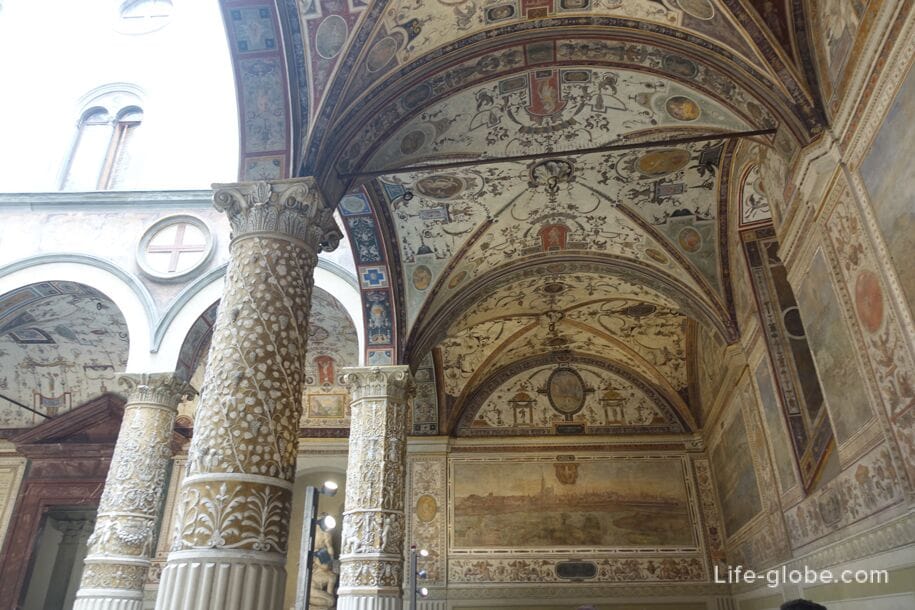
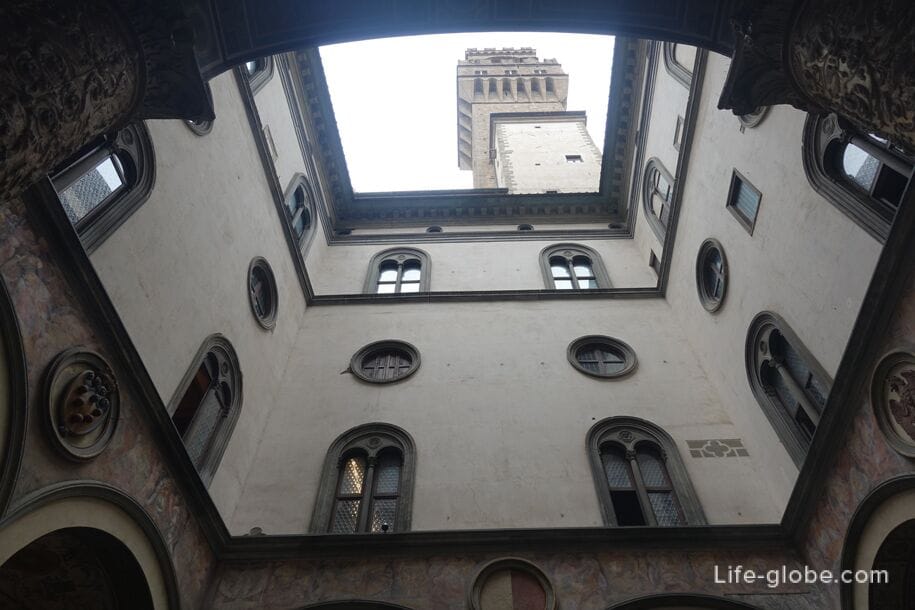
The second courtyard, also called the "Customs", contains massive columns built in 1494 by Kronaka, which support a large "Hall of Five Hundred".
Between the first and second courtyards there is a monumental staircase by Vasari.
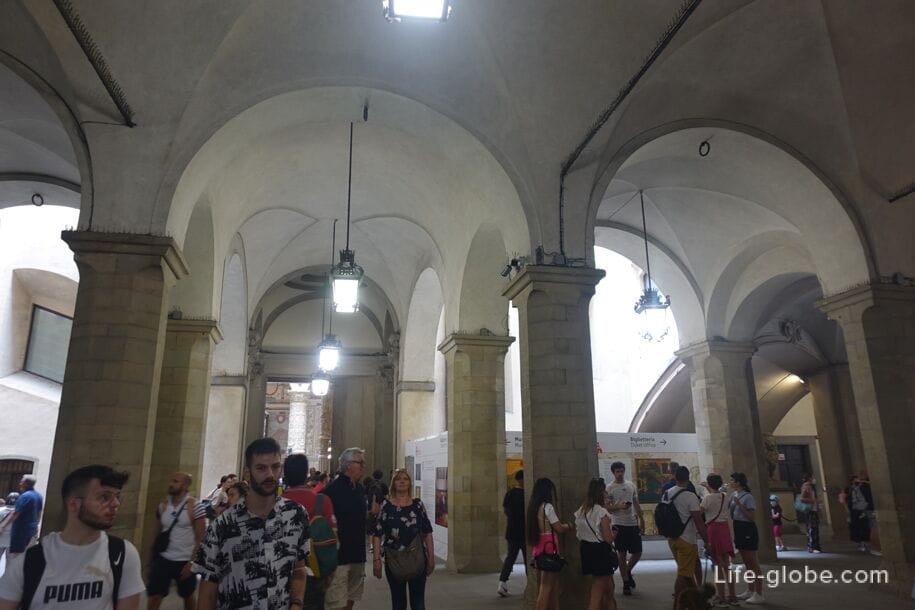
In the second courtyard there are ticket offices where you can buy tickets to the Palazzo Museum and the Arnolfo Tower.
Also in the palazzo there is a third courtyard, which was used mainly for the offices of the city.
Interiors of Palazzo Vecchio
Visiting the interiors of the palace is paid.
On the ground floor of the palace, not counting the courtyards floor - this is the ground floor, there are monumental apartments and the largest hall.
The Hall of the Five Hundred, also known as the sixteenth century Hall (Salone dei Cinquecento), is one of the most representative halls of the late Florentine Renaissance and the splendor of the Medici court. The hall was built at the end of the 15th century and became the residence of the Grand Council (Consiglio Maggiore), consisting of 500 members. The hall is decorated with frescoes and sculptures, and the ceiling is made of 39 panels painted by Vasari and his assistants, depicting great episodes from the life of Cosimo I, the quarters of the city and the city itself; closer to the center is the apotheosis: the scene of his Glorification as the Grand Duke of Florence and Tuscany.
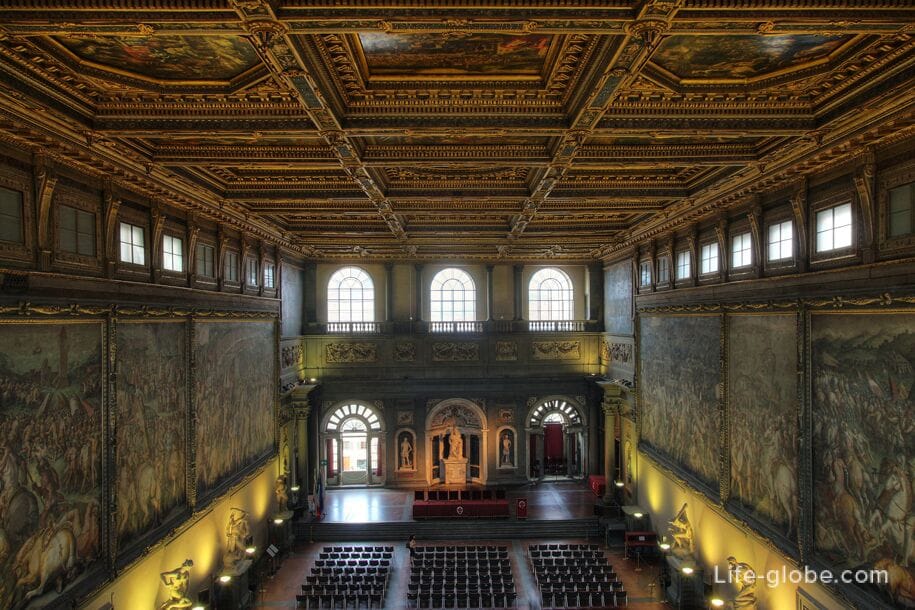
From the hall of five hundred there is an entrance to the Studio Francesco I Medici - an extraordinary "wardrobe of rare and precious things".
The windowless room was a small secret study decorated by Vasari in the Mannerist style (1570-1575). The walls and the cylindrical vault are filled with paintings, stucco and sculpture. Most of the paintings belong to the Vasari school and represent four elements: fire, water, earth and air. The portrait of Cosimo I and his wife Eleonora of Toledo was painted by Bronzino. The bronze sculptures were created by Giambologna and Bartolomeo Ammanati. Through a peephole, Francesco spied on his ministers and officers during meetings in the Hall of Five Hundred.
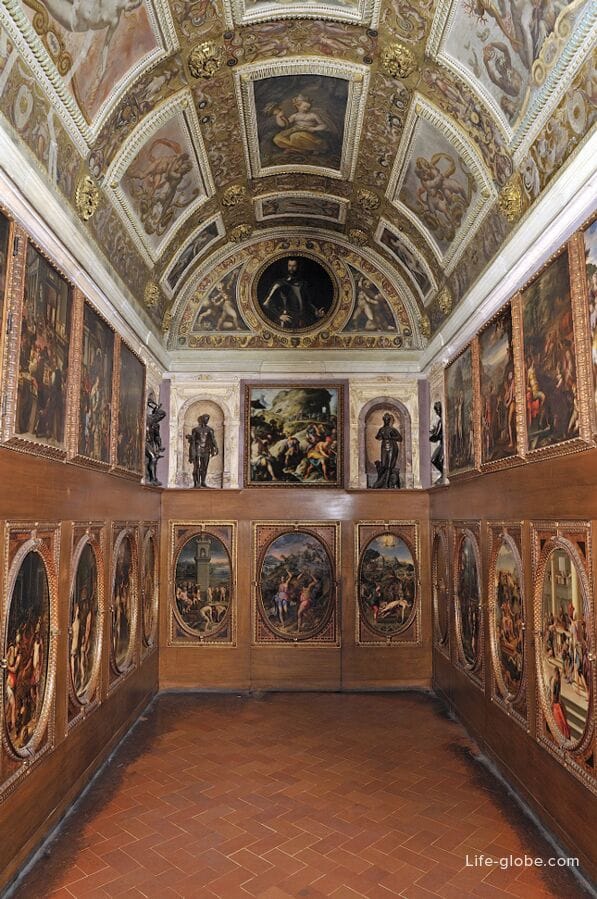
Also on the ground floor there are rooms that were the residences of the priors and part of the rooms of Leo X, which are now used by the mayor as offices and reception rooms and are inaccessible to the public.
There is a mezzanine between the first and second floors of Palazzo Vecchio. It is located in the oldest part of the building, built in the early 14th century, around the courtyard known as Michelozzo.
At the time of the priors, the mezzanine was the residence of important magistrates, such as the Ten of Balia and the Council of Seventy, and then the private residence of the lifelong gonfaloniere Piero Soderini, after that - the residence of the Duty and Consumer Office.
In 1934, after the restoration, some rooms were furnished with works of art and antique legate furniture, with which the American collector Charles Alexander Lozer wanted to contribute to the preparation of the new Palazzo Vecchio Museum and which since then constitute one of the collections representing the greatest historical and artistic value in the city.
On the second floor of Palazzo Vecchio there are numerous halls and rooms, including the Hall of Elements, Juno's back, the Hall of Hercules, the chapel of Duchess Eleanor, the halls of priors, the chapel of priors, the Audience Hall, the hall of Lilies, the hall of chancery and the room of geographical maps or wardrobe.
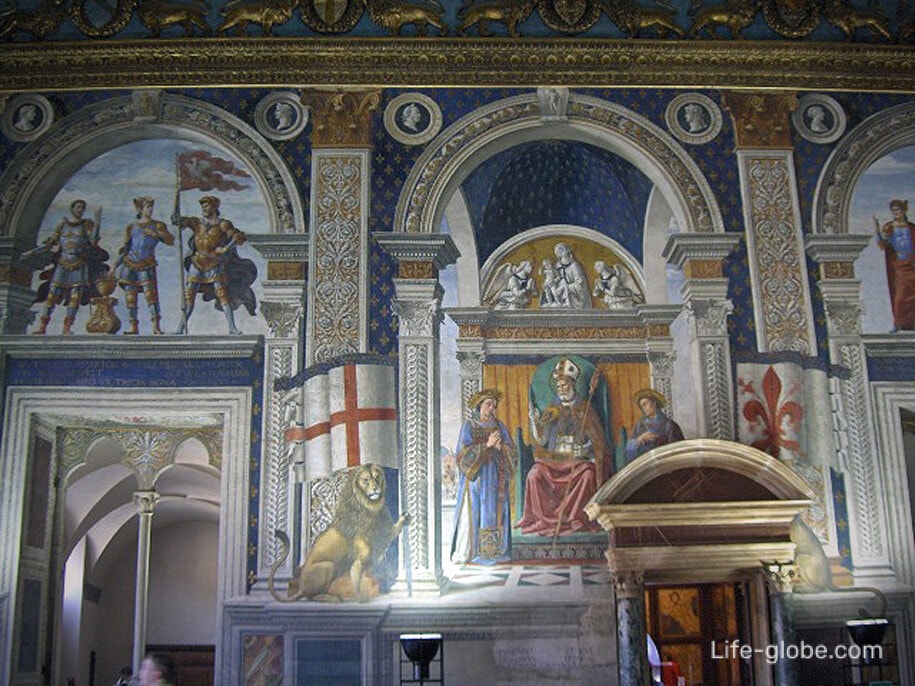
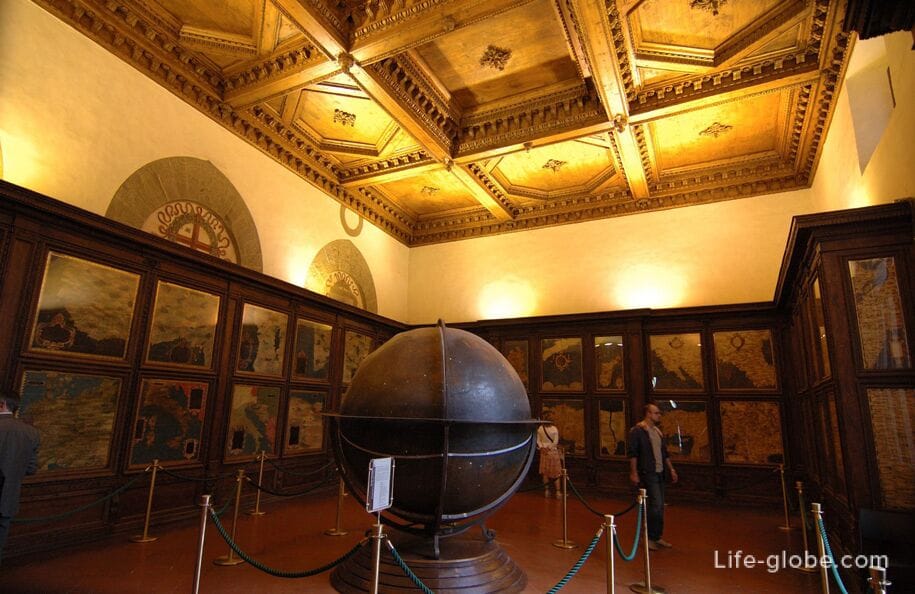
Practical information
Entrance to the Palazzo Vecchio Museum and ascent to the observation deck of the Arnolfo Tower are paid.
Temporary exhibitions are also held in the premises of the Palazzo Vecchio.
Tickets can be purchased at the ticket offices of the palace or in advance on the website.
The cost of tickets, places and conditions of ticket purchase, opening hours of the palazzo, halls and rooms, as well as information about exhibitions, etc., we recommend checking before visiting the official website: museo-di-palazzo-vecchio.
Address of Palazzo Vecchio: P.za della Signoria, 50122 Firenze FI, Italy.
Coordinates of Palazzo Vecchio: 43°46'10.0"N 11°15'22.0"E (43.769444, 11.256111).
All accommodation facilities in Florence (hotels, apartments, guest houses, etc.), including in the historical center of the city and more remotely from it, can be viewed and booked here






